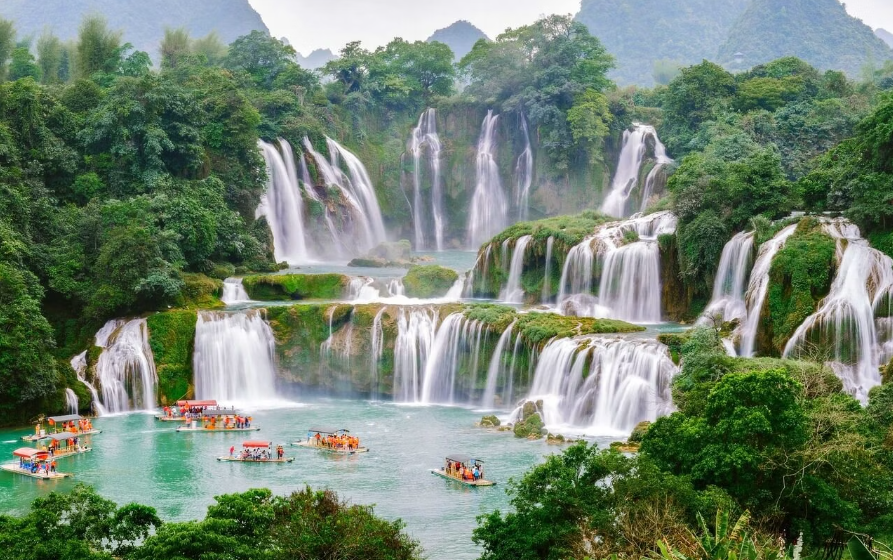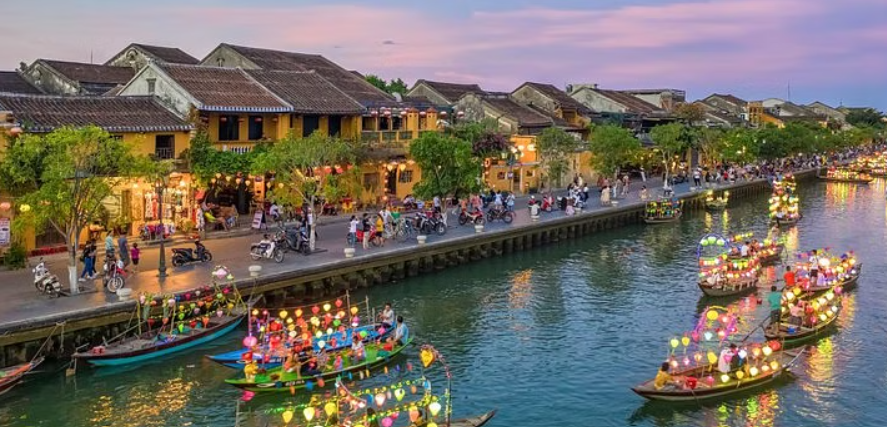Vietnam time, with its stunning landscapes, rich history, and vibrant culture, is a must-visit destination for travellers seeking diverse experiences. However, determining the best time to visit Vietnam can be challenging due to its varied climate across different regions. In this article, we will explore the best times to visit Vietnam various parts , considering weather patterns, major festivals, and the unique attractions each season offers.
Understanding Vietnam’s Climate
Vietnam’s climate varies significantly from north to south, influenced by its long, narrow shape and geographical diversity. The country can be divided into three main regions: the North, the Central, and the South, each with distinct weather patterns.
Northern Vietnam
Northern Vietnam, including Hanoi, Ha Long Bay, and Sapa, experiences four distinct seasons: spring, summer, autumn, and winter.

- Spring (March to April): Spring is one of the best times to visit Vietnam Northern. The weather is mild and pleasant, with temperatures ranging from 15°C to 25°C (59°F to 77°F). Flowers bloom, especially the famous cherry blossoms in Sapa, making it an ideal time for trekking and exploring the picturesque landscapes.
- Summer (May to August): Summer in the north can be hot and humid, with temperatures often exceeding 30°C (86°F). While this might not be the best time for those who prefer cooler climates, it is perfect for visiting HaLong Bay and enjoying beach activities.
- Autumn (September to November): Autumn is arguably the best time to visit Vietnam Northern. The weather is cool and dry, with temperatures ranging from 20°C to 30°C (68°F to 86°F). This season is perfect for exploring Hanoi’s old quarter, taking a cruise on HaLong Bay, and trekking in Sapa.
- Winter (December to February): Winter in Northern Vietnam can be quite cold, especially in the mountainous regions like Sapa, where temperatures can drop to 0°C (32°F). Hanoi experiences milder winters with temperatures ranging from 10°C to 20°C (50°F to 68°F). If you enjoy cooler weather and fewer tourists, this might be a good time to visit.
Central Vietnam
Central Vietnam time, including cities like Hue, Da Nang, and Hoi An, has a more tropical climate with a distinct rainy season.
- Dry Season (January to August): The best time to visit Vietnam Central is during the dry season, with the peak months being February to May. The weather is warm and sunny, perfect for beach activities and exploring the ancient town of Hoi An and the imperial city of Hue. Temperatures range from 25°C to 35°C (77°F to 95°F).
- Rainy Season (September to December): The rainy season in Central Vietnam is characterised by heavy rains and occasional typhoons. While this period might not be ideal for beachgoers, it can be a good time to experience the region’s cultural sites without the crowds. However, it’s essential to stay updated on weather forecasts and potential flooding.
Southern Vietnam
Southern Vietnam time, including Ho Chi Minh City and the Mekong Delta, has a tropical climate with two main seasons: dry and wet.

- Dry Season (December to April): The dry season is the best time to visit Vietnam Southern. The weather is hot and dry, with temperatures ranging from 25°C to 35°C (77°F to 95°F). This season is ideal for exploring Ho Chi Minh City’s bustling streets, taking a boat tour in the Mekong Delta, and relaxing on the beaches of Phu Quoc Island.
- Wet Season (May to November): The wet season in Southern Vietnam is characterised by frequent, heavy downpours, especially in the afternoons. While the rains can be intense, they are usually short-lived, leaving the rest of the day dry and sunny. This period is less crowded and can be a good time to find travel deals.
Major Festivals and Events
Vietnam time cultural richness is reflected in its numerous festivals and events. Planning your visit around these occasions can enhance your travel experience.
- Tet (Lunar New Year): Tet, the most important festival in Vietnam, usually falls in late January or early February. It’s a time for family reunions, and many businesses close for a week or more. While some areas may be quieter, it’s a unique opportunity to witness traditional customs and celebrations.
- Mid-Autumn Festival: Celebrated in September or October, the Mid-Autumn Festival is a time for family gatherings, lantern parades, and mooncakes. Hoi An, with its colourful lanterns, is a particularly magical place to experience this festival.
- Hue Festival: Held biennially in April, the Hue Festival is a celebration of the city’s imperial heritage, featuring music, dance, and cultural performances. It’s an excellent time to visit Hue and immerse yourself in Vietnamese history and culture.
Tips for Travelling to Vietnam
- Plan for Regional Differences: Given the climatic diversity, it’s essential to plan your itinerary based on the regions you intend to visit. Northern, Central, and Southern Vietnam have different optimal travel periods, so tailor your trip accordingly.
- Pack Accordingly: Depending on the season and region, packing the right clothing is crucial. Lightweight, breathable fabrics are ideal for the humid weather, while warmer clothing is necessary for the cooler northern winters.
- Stay Informed: Always check the weather forecast, especially during the rainy season and typhoon periods. Staying informed can help you adjust your plans and ensure a safe and enjoyable trip.
- Embrace the Local Culture: Vietnam’s festivals and cultural events offer a unique glimpse into the country’s traditions. Participate in local celebrations, try traditional foods, and respect local customs to make the most of your visit.
Conclusion
The best time to visit Vietnam depends on your preferences and the regions you wish to explore. Whether you’re drawn to the cool, misty mountains of the north, the sunny beaches of the central coast, or the vibrant cities of the south, Vietnam offers something for every traveller. By understanding the climate patterns and planning your trip around major festivals, you can ensure a memorable and enriching experience in this beautiful Southeast Asian country.
As you prepare for your journey, remember that Vietnam’s diverse landscapes, rich history, and warm hospitality await you. Whether you visit during the bustling Tet celebrations or the serene autumn months, Vietnam’s charm and allure will leave a lasting impression.



